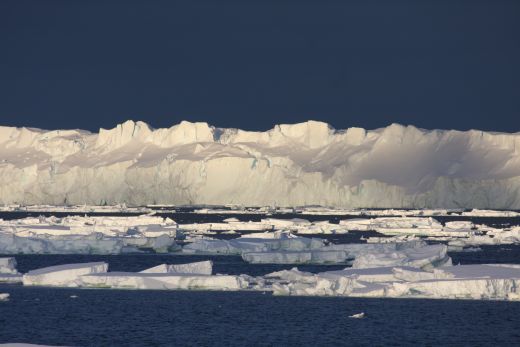
The University of Tasmania has received Australian Research Council (ARC) grants totalling more than $4.6 million for nine new research projects, including detecting changes in Antarctic glaciers, improving seafood safety, and developing new systems for 3D printing in chemistry.
Minister for Education Dan Tehan announced the successful recipients of the ARC’s Discovery Project Scheme and Linkage Project Scheme on Friday, 13 November. The schemes aim to expand the knowledge base and capacity in Australia by providing funding to support high-quality fundamental and purpose-driven research projects.
University of Tasmania Deputy Vice-Chancellor (Research) Professor Anthony Koutoulis was delighted with the funding announcement, which aligns with the University’s core research strengths.
“Our researchers are committed to making a real difference for Tasmania and from Tasmania to the world, and we welcome the funding that enables this important work to take place,” Professor Koutoulis said.
“We look forward to seeing the contributions that this research will make to furthering our knowledge and having true research impact in chemistry, resource sustainability, Antarctic and marine ecosystems, and climate science and policy.”
Congratulations to the successful ARC Discovery Project Scheme recipients for grants that will be administered by the University of Tasmania:
Associate Professor Alexander Bissember, School of Natural Sciences – Chemistry ($560,000) to develop new catalytic synthetic reactions for the rapid functionalisation of organic compounds under mild conditions with the use of visible light.
Associate Professor Christopher Bolch, Professor Gustaaf Hallegraeff, Institute for Marine and Antarctic Studies ($450,000) to further our understanding of algal bloom microbiome function to improve seafood safety.
Professor Michael Breadmore, Dr Vipul Gupta, Australian Centre for Research on Separation Science ($300,000) to develop new systems and technologies that address the barriers faced by 3D printing in chemistry.
Professor Michael Breadmore, Australian Centre for Research on Separation Science ($517,000) to understand the transport mechanism of ions into and within polymer inclusion membranes under the influence of an applied voltage.
Associate Professor Mary-Anne Lea, Dr Simon Wotherspoon, Institute for Marine and Antarctic Studies ($497,000) to assess long-term variability in the behaviour of marine predators to provide new measures of integrated changes in eastern Antarctic ecosystems throughout the winter, providing information needed to underpin future management and adaptation strategies.
Professor Jan McDonald, Associate Professor Jeff McGee, School of Law ($246,805) to help expand Australia’s climate response options by developing a governance framework for research, development and deployment of solar radiation management.
Associate Professor Helen Phillips, Dr Maxim Nikurashin, Dr Bernadette Sloyan, Institute for Marine and Antarctic Studies ($764,194) to develop new knowledge of ocean-atmosphere interactions along the path of the Indonesian Throughflow, from the Pacific to the Indian Ocean, which is the powerhouse that drives changes in winds and rainfall around Australia and the Indo-Pacific region.
Professor Anya Reading, Professor Larry Forbes, Dr Sue Cook, School of Natural Sciences ($622,270) to establish a way of detecting change in the great outlet glaciers of East Antarctica by analysing the small vibrations made by moving water or by cracking and sliding ice.
Congratulations to the successful ARC Linkage Project Scheme recipients:
Associate Professor Julia Blanchard, Professor Duncan Cameron, Professor Chris Carter, Associate Professor Catriona MacLeod, Dr Louise Adams, Dr Peat Leith, Associate Professor John Bowman, Institute for Marine and Antarctic Studies ($720,000) to assess the global and local consequences of changing feeds in aquaculture by developing a new interdisciplinary sustainability assessment framework.
(Pictured): Shedding ice at the Totten Glacier (Esmee van Wijk, CSIRO)







